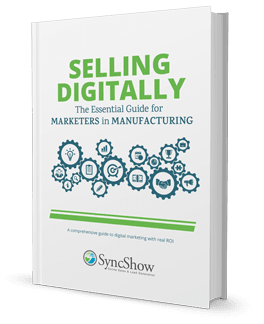Share this
How to Target Your Message to a Specific Geographic Location
by Chris Peer on Thu, May 08, 2014 @ 08:30
 You know that your product is the best on the market, better than your competitors, and you might even have a message ready - but how do you ensure the right ears hear it? Targeting your proposition to local businesses and consumers helps you automatically cut through the "marketing clutter" on television, billboards and other wide-band advertising styles to get to the heart of your demographic. The trick is doing so skillfully, as a misstep with your local audience is a much broader stumble than you'd experience with nationwide campaigns; discretion, succinct statements and timing are the best tools in your arsenal when it comes to approach, but your selected venues are equally, if not more, important. Here are a few tips to guide you when it comes to steering your Inbound Marketing message to locals:
You know that your product is the best on the market, better than your competitors, and you might even have a message ready - but how do you ensure the right ears hear it? Targeting your proposition to local businesses and consumers helps you automatically cut through the "marketing clutter" on television, billboards and other wide-band advertising styles to get to the heart of your demographic. The trick is doing so skillfully, as a misstep with your local audience is a much broader stumble than you'd experience with nationwide campaigns; discretion, succinct statements and timing are the best tools in your arsenal when it comes to approach, but your selected venues are equally, if not more, important. Here are a few tips to guide you when it comes to steering your Inbound Marketing message to locals:
Where Are Your Customers?
This is a question that should be taken literally when it comes to crafting the beginnings of your geo-targeted Inbound Marketing message. Look at your existing customers and plot them, either roughly or individually, on a local map to figure out where your highest concentration of business is. Depending on your product or service, this area can either be marked as saturated - e.g. you've exhausted your prospects there - or as extremely fertile for perpetual business. Take this approach and expand it to find the three best towns or metro areas located around your business to target - these are the geographical names you'll need to attach to your Inbound Marketing messages to make them more appealing to locals.
TIP: Remember, when a potential customer in Seattle is looking for a plumbing service online, they're far more likely to type in "Seattle Emergency Plumber" in a search engine than they are "Emergency Plumber" - a plumber that's located in Chicago won't be of much use!
Be In The Moment
News travels fast, which is doubly true in the age of the internet. If you own a glass cutting business and a bad storm has or is due to hit your neighborhood, putting the word out on a fast-paced social media network like Twitter will help you connect with your customers as they need you. Responding directly to customers with a need your product can fill is another way to spread the word locally, especially if the names of your targeted neighborhoods are worked into the message.
TIP: Back up your messages with solid, readily-available information on your website. Coaxing a customer to a site that doesn't post easily-located hours, directions or a list of products/services will leave them confused or more likely to use another provider.
Name Drop in Narratives
If you have blogs or "storytelling" style Inbound Marketing content, don't be afraid to drop some local references in order to assure your customers you're "one of them." If your product has a vendor presence at a large annual event held locally, use your vendors as a case study, complete with pictures. If you've had local celebrities drop by or endorse your product, be sure to take advantage of the Inbound Marketing opportunity by incorporating the meeting into your ads. Remind your audience that you've been proudly serving your local area for however many years you've been in business, and emphasize your roots whenever possible.
TIP: Just because your business has been in the same place or serving the same community for a number of years doesn't mean your message should go stale. Be sure to mix up your tag lines, marketing messages and other frequently-used content to avoid being shuffled into the "seen it" category in the minds of your local customers.
Check out another great geolocation post from our archives: How Geolocation Can Improve Your eCommerce Sales
Image courtesy of ddpavumba via FreeDigitalPhotos.net
Share this
- Inbound Marketing (125)
- Manufacturing (82)
- Lead Generation (70)
- Website Design & Development (57)
- Social Media (46)
- Online Brand Strategy (38)
- eCommerce (33)
- B2B Marketing (26)
- Expert Knowledge (26)
- Digital Marketing (24)
- Company Culture (22)
- Content Marketing (16)
- Customer Experience (15)
- Metrics & ROI (15)
- Search Engine Optimization (15)
- Marketing and Sales Alignment (12)
- Transportation and Logistics (10)
- Content Marketing Strategy (9)
- SyncShow (9)
- Digital Sales (8)
- Email Marketing (8)
- Lead Nurturing (8)
- Digital Content Marketing (7)
- Mobile (7)
- Brand Awareness (6)
- Digital Marketing Data (4)
- Video Marketing (4)
- General (3)
- LinkedIn (3)
- Professional Services (3)
- Transportation Insights (3)
- News (2)
- PPC (2)
- SEO (2)
- SSI Delivers (2)
- Account-Based Marketing (1)
- Demand Generation (1)
- Facebook (1)
- High Performing Teams (1)
- Instagram (1)
- KPI (1)
- Marketing Automation (1)
- Networking (1)
- Paid Media (1)
- Retargeting (1)
- StoryBrand (1)
- Storytelling (1)
- Synchronized Inbound (1)
- April 2024 (1)
- March 2024 (3)
- January 2024 (2)
- December 2023 (4)
- November 2023 (3)
- October 2023 (1)
- September 2023 (4)
- August 2023 (3)
- July 2023 (2)
- June 2023 (2)
- August 2022 (2)
- July 2022 (2)
- June 2022 (1)
- March 2022 (2)
- February 2022 (1)
- January 2022 (2)
- October 2021 (1)
- June 2021 (1)
- May 2021 (1)
- March 2021 (1)
- December 2020 (1)
- October 2020 (2)
- September 2020 (1)
- August 2020 (3)
- July 2020 (3)
- June 2020 (4)
- May 2020 (2)
- April 2020 (3)
- March 2020 (9)
- February 2020 (5)
- January 2020 (6)
- December 2019 (5)
- November 2019 (7)
- October 2019 (6)
- September 2019 (8)
- August 2019 (5)
- July 2019 (5)
- June 2019 (3)
- May 2019 (2)
- April 2019 (1)
- March 2019 (2)
- February 2019 (1)
- January 2019 (2)
- November 2018 (1)
- October 2018 (1)
- September 2018 (1)
- August 2018 (1)
- May 2018 (2)
- March 2018 (1)
- November 2017 (1)
- October 2017 (1)
- September 2017 (1)
- August 2017 (2)
- July 2017 (2)
- May 2017 (1)
- April 2017 (1)
- February 2017 (1)
- January 2017 (1)
- December 2016 (1)
- November 2016 (8)
- October 2016 (7)
- September 2016 (2)
- August 2016 (2)
- July 2016 (6)
- June 2016 (3)
- May 2016 (4)
- April 2016 (6)
- March 2016 (6)
- February 2016 (7)
- January 2016 (7)
- December 2015 (6)
- November 2015 (2)
- October 2015 (3)
- September 2015 (2)
- August 2015 (4)
- July 2015 (9)
- June 2015 (9)
- May 2015 (8)
- April 2015 (8)
- March 2015 (9)
- February 2015 (7)
- January 2015 (8)
- December 2014 (7)
- November 2014 (7)
- October 2014 (5)
- September 2014 (4)
- August 2014 (4)
- July 2014 (5)
- June 2014 (4)
- May 2014 (5)
- April 2014 (4)
- March 2014 (7)
- February 2014 (9)
- January 2014 (7)
- August 2013 (2)
- July 2013 (4)
- June 2013 (6)
- May 2013 (7)
- April 2013 (7)
- March 2013 (8)
- February 2013 (5)
- January 2013 (7)
- December 2012 (4)
- November 2012 (4)
- October 2012 (2)
- September 2012 (1)
- July 2012 (1)
- April 2012 (4)
- March 2012 (5)
- February 2012 (2)
- January 2012 (3)
- November 2011 (1)
- May 2011 (3)
- April 2011 (1)
- March 2011 (1)
- February 2011 (1)
- December 2010 (2)
- November 2010 (3)
- August 2010 (1)
- July 2010 (1)
- May 2010 (2)
- April 2010 (1)
- January 2010 (1)




